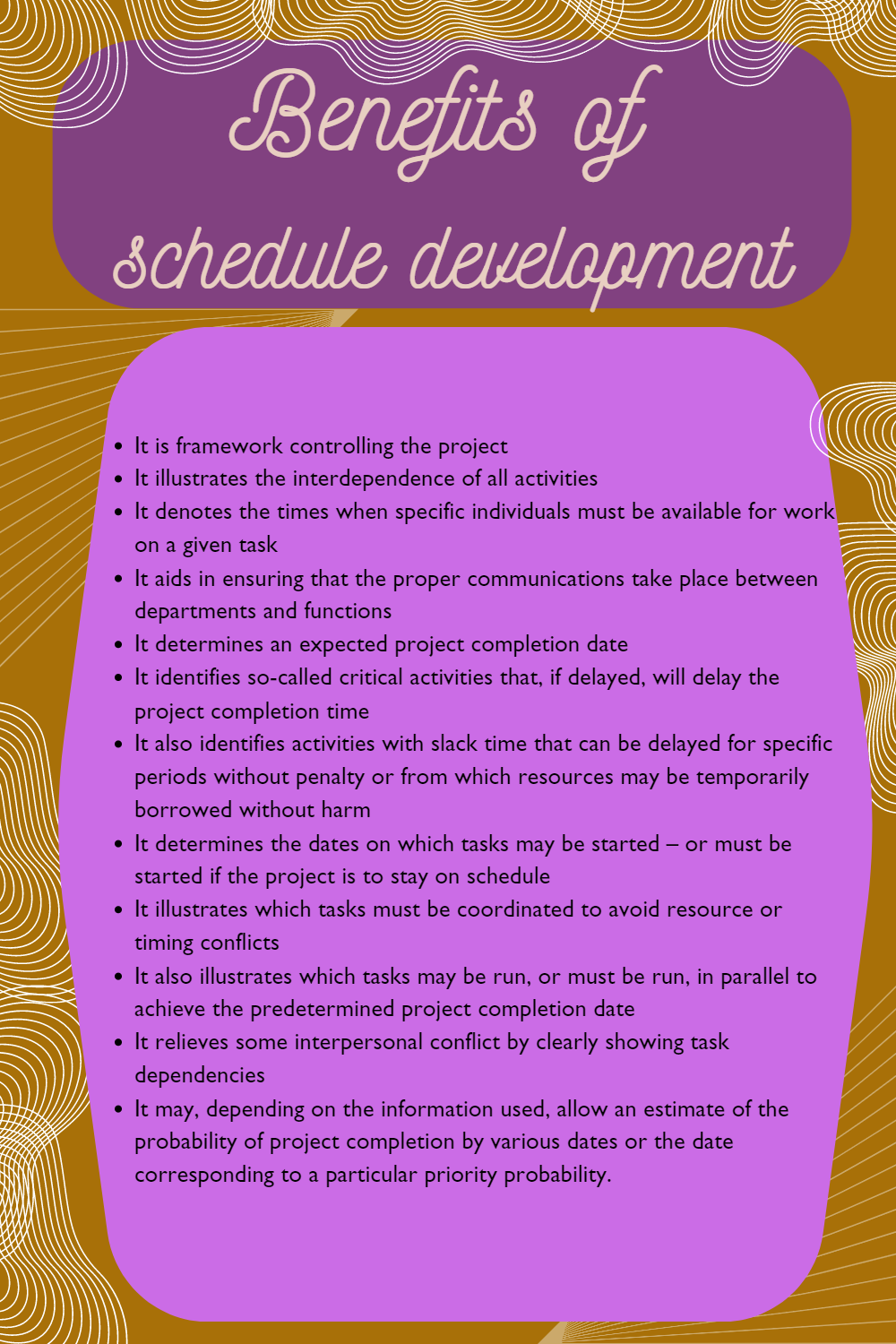Once the Work Breakdown Structure has been approved, the team can identify how the project deliverables will be produced. With activity identification and definition, the team is determining "how" the project's scope (i.e. Work Breakdown Structure elements) will be delivered. At this point in the project planning, the team should not be concerned with how long, by whom, or how much time specific activities will take to complete. This process is primarily concerned with the activities and tasks (actions) required to deliver the committed project work. To accomplish this phase of project planning, techniques such as brainstorming, seeking expert judgment and gathering historical and background information must be used.
Teams can now decide on the order of the activities and their associated durations. These steps will help teams to determine the overall project schedule (when) and its associated critical path (how long). By definition, the Critical Path is the longest time path on the project's network diagram, thus representing the minimal amount of time required to complete the project. At the conclusion of these steps, a project team can understand when the project can be optimally completed, based on the relationship of activities, dependencies, sequence and duration.
Project scheduling is in essence the conversion of the WBS into an operating timetable. It serves as a basis for monitoring and controlling project activity and, taken together with the plan and budget, is probably the major tool for the management of projects. The basic approach to all scheduling techniques is the development of a network diagram that graphically portrays the sequential relations between the tasks in the project. Such networks are powerful tools to ensure the timeous execution and control of the various project activities and have the following benefits:

Allocate Resources
It is now time to identify, allocate, and align the team members with the Work Breakdown Structure of the project. During the resource planning processes, the team is answering the "who" questions associated with the project's work. Depending on the skill level and the number of resources that are available, this step could either increase or decrease the amount of time needed to get the project done. At this point, it is necessary to revisit the Critical Path and overall duration of the project and adjust where necessary.
Most of the hurdles and roadblocks that occur during a project arise due to poor or inadequate project planning. Putting the cart before the horse and jumping headfirst into a project can be tempting, but that haphazard approach will almost always lead to future headaches. Taking a strategic approach to project planning - from the Work Breakdown Structure to the timeline - will help to ensure that the hard work of everybody involved aligns with the scope of the project, ultimately ensuring the successful completion of the project at hand.
The critical path method (Activity on Node) in conjunction with the precedence diagram, WBS and the activity sequencing enables the project manager and his/her project team to develop the project schedule.
The cornerstone of any well-managed project is the schedule. This is a tool that identifies and organises project tasks into a sequence of events, which then form a project management plan. The process of building the schedule enables the project manager to identify the risk points and understand the proper linkage of events that assists in resource planning and allows the PM to establish goals for the team and the project.
The ultimate purpose of project management is to obtain the most efficient use of resources. This can be a problem, however, if there are wide swings in resource needs. There will be times when team members feel they can’t get enough done, and times when they can’t get enough done. Even when it is carefully planned, a project will not consistently need the same amount of time from the same amount of people. One approach to maximise the use of people is to use the information from the WBS, together with the information regarding the amount of float, to schedule activities that are not on the critical path.
Kimmons defines resource levelling as “the process of scheduling work on non-critical activities so that resource requirement on peak days will be reduced”.
Although in this sense resources refer to all project resources that are limited within a specified time period, including personnel, equipment, and materials, resource levelling is most often used to allocate personnel to different project activities.
To determine the optimal use of resources, the project manager needs to begin by assuming that all activities will begin at their earliest start dates. Based on this assumption, the project manager can then draw a graph, showing the required personnel by job type (title) over a period of time. This graph will show peaks, times when there is a great amount of work to be done, and valleys, times when there is less work to be done.
Using the PERT/CPM diagram and the table that depicts the float associated with each activity, the project manager can then level the resources by mobbing the start dates for some of the activities that have floated to a later time (but prior to the latest start date). The process continues until the changes in personnel requirements from one time period to the next are minimised; that is until the peak and valleys are evened.
Of course, with large, complex projects, the project manager would want to rely on computer software to perform this type of analysis.
The project schedule should be presented, as is the case with all other project documents – to stakeholders, authorities and role-players in an agreed-upon format. Any changes to the project schedule should be appropriately be authorised according to the project change request procedure.